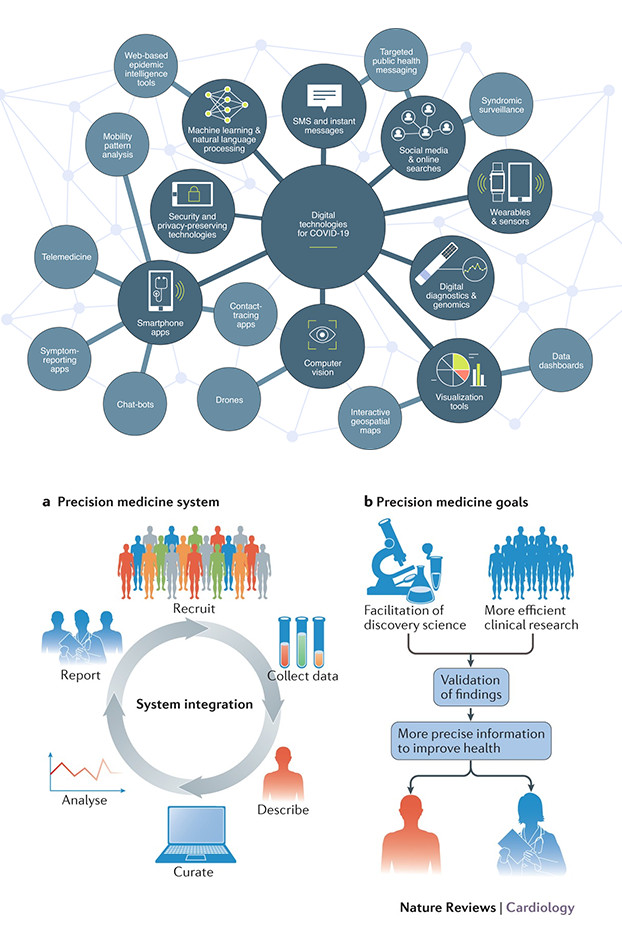

- Home
-
Leadership
 Leadership查看更多>
Leadership查看更多>In alignment with the strategic needs of Healthy China, our focus revolves around the domain of health and medical big data. We strive to bring together internationally renowned experts and scholars in medical and health big data to jointly establish a research institution and a collaborative R&D platform with significant international influence. The institute serves the national strategy for big data development, conducting targeted research in health and medical big data, with the goal of becoming a world-class research institute and standardization body. We aim to support public health, clinical practice, basic research, government decision-making, and industry development, while also promoting disciplinary advancement and nurturing interdisciplinary talents in the field of health and medical big data. Our commitment is to play a pivotal role in advancing the medical and health big data industry.
-
Introduction
 Introduction查看更多>
Introduction查看更多>The National Health and Medical Big Data Research Institute (Shenzhen) was established in November 2020 with the approval of the Planning and Information Technology Department of the National Health Commission. The institute is a non-profit scientific research organization jointly constructed by the Shenzhen Municipal Health Commission, Shenzhen Big Data Research Institute, and The Chinese University of Hong Kong (Shenzhen). It operates as an independent legal entity of type II and is headed by Professor Luo Zhiquan, Vice President of The Chinese University of Hong Kong (Shenzhen). Led by Professor Yu Guangjun, Vice Dean of the Medical School of The Chinese University of Hong Kong (Shenzhen) and former President of Shanghai Children's Hospital, the institute has gathered a group of world-class data scientists, including senior research scientists and recipients of the National Science Fund for Distinguished Young Scholars, as well as software engineers and graduate students. Besides permanent staff, the institute welcomes visiting professors/scholars for short-term research and other university professors and affiliated members working on research projects, as well as visiting students being trained at the institute. The institute has made a series of breakthroughs through strategic industry cooperation with entities such as the National Health Commission, Shenzhen Municipal Health Commission, Shenzhen Science and Innovation Committee, Huawei, Tencent, and West China Hospital. Key achievements include intelligent annotation and summarization of Chinese electronic medical records, the construction of the largest Chinese medical Q&A dataset Hua Tuo GPT, graph neural network-based nuclear classification, and the rare disease auxiliary diagnosis system GPS, which received national support under the "14th Five-Year Plan." Aiming to become an international, innovative R&D institution that integrates medical engineering, promotes open sharing, diversifies investments, and operates efficiently, the institute is committed to sustainable development in the health and medical big data field, based in Shenzhen and the Greater Bay Area. Driven by the triad of "Data Science Research Center, Engineering Technology Research Center, and Application Research Center," the institute focuses on building a common platform centered on data governance and related standards and norms, as well as on research directions including medical natural language processing, intelligent medical imaging, proactive health and chronic disease management, public health and hospital management, and precision medicine. Utilizing the big data governance platform, the institute aims to establish international standard scenarios for medical big data AI applications, shaping Shenzhen standards, norms, and policy measures for AI in social governance. The goal is to become a national experimental base for health and medical big data and AI in social governance in the Greater Bay Area, and a national demonstration center for innovative applications of health and medical big data.
-
Organizational
 Organizational查看更多>
Organizational查看更多>National Health and Medical Big Data Research Institute (Shenzhen), developed and constructed with the support of Shenzhen Big Data Research Institute and The Chinese University of Hong Kong, Shenzhen, will actively expand its participating units. These units will rely on universities, research institutions, and well-known enterprises across the Guangdong-Hong Kong-Macao Greater Bay Area, extending its coverage nationwide. The institute will establish a dedicated Management Committee (Board of Directors) to serve as the decision-making and supervisory body. It will operate under the leadership of the Management Committee with a director taking executive responsibilities. The institute will establish a Health and Medical Big Data Expert Committee to provide strategic guidance for the scientific research and development of the institute, as well as oversee the publication of health and medical big data journals and guide the annual summit forum. An Industry Advisory Committee will be set up to comprehensively understand the industrial development and trends of health and medical big data at home and abroad, and provide guidance on the industrialization of research outcomes of the institute. An Open Topic Management Committee will be established to review and defend the external cooperation funds and open topics of the institute, and supervise their implementation process and output. A Standards and Regulations Committee will be set up to jointly release various medical data information standard processes, data label specifications, and evaluation standards for various digital medical technologies with the Shenzhen Municipal Health Commission and the Shenzhen Health Development Research and Data Management Center.
-
Research Team

-
Research Directions

-
Contact us
 Contact us查看更多>
Contact us查看更多>Telephone:
0755-23517470
Email:
NHDISZ@nhdisz.cn
Address:
No. 2001 Longxiang Avenue, Longgang District, Shenzhen City




 官方公众号
官方公众号